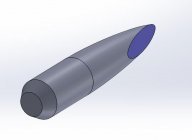I clicked on the link earlier in this thread and it didn't bring anything up.
However, dissimilar wind drift is mentioned 18 times in the patent for the DTR reticle: http://www.google.com/patents/US20130047485
jrm850,
When experts disagree it's common to consider how their credentials compare on the topic at hand. As you observed, David and I are both successful competitors. However, the issue at hand has nothing to do with competition. It's ballistics. It's science. In this area, my credentials include an aerospace engineering degree from Penn State. My first job after college was with the US Air Force where I worked on air-to-air missile design for 6 years. David can correct me if I'm wrong, but I believe his formal education is in business. Not sure what his work experience is prior to working in the shooting industry.
I don't intend any negativity or ill will toward David, nor is the matter of credentials decisive when experts disagree. It's just something to consider. For example, I would expect someone formally educated in business to get patents on things they can profit from that aren't necessarily scientifically proven. That happens all the time. Likewise no-one should expect a scientist to believe something just because a businessman has patented it and makes money from it.
-Bryan











